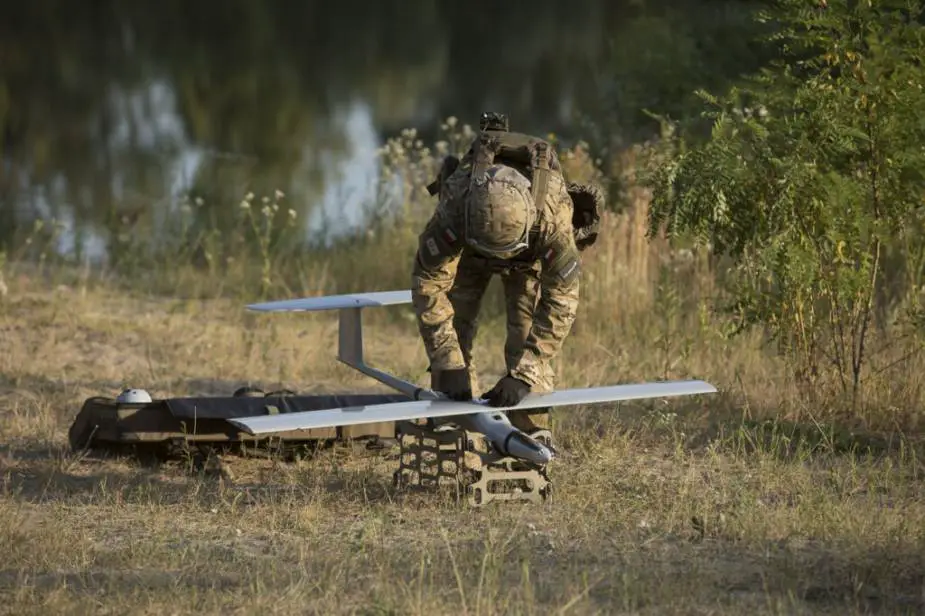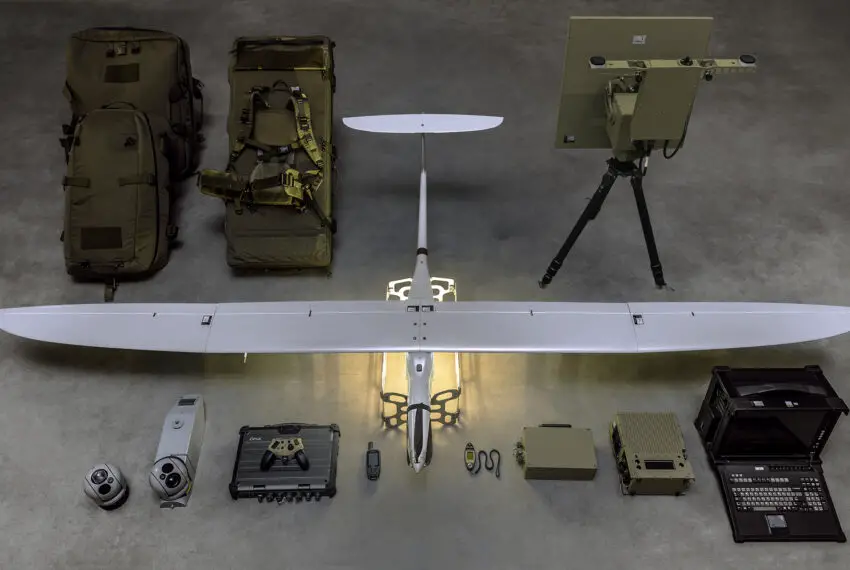Breaking news
Polish army to get WB Group FlyEye mini UAVs for its artillery units.
According to Jacek Siminski in Defence 24, Head of the Polish Ministry of Defence, Mariusz Błaszczak, announced that an agreement was signed for the procurement of 11 FlyEye UAVs, manufactured by WB Electronics, completing the negotiation on procurement that had been going on since late 2021 when a decision to procure those systems was approved by the Council on Armament.
Follow Army Recognition on Google News at this link

The Polish artillery will receive FlyEye mini UAVs (Picture source: WB Group)
As confirmed by the spokesperson for the Armament Agency, Lt. Col. Krzysztof Płatek, the agreement concerns 11 UAV sets, Jacek Siminski writes. The new UAVs will be delivered to the rocket/artillery component (Wojska Rakietowe i Artyleria) of the Polish army which already operates the Topaz ZZKO automated fire control system, an asset that makes it possible to use the UAVs to designate artillery targets and adjust the firing solutions. A system as such has been combat-proven in Afghanistan, Jacek Siminski mentions, where the FlyEye UAVs were working together with Dana-T howitzers and Liwiec firefinder radars, both using the Topaz fire control system. A single FlyEye system set includes 4 UAVs, with a control, command, and communications suite.
The artillery would acquire most probably 44 such mini UAVs, Jacek Siminski speculates. Nowadays the FlyEye system is only operated at the level of artillery regiment - three sets in total. After the agreement discussed here is finalized, the UAVs may also see use at the artillery squadron level - at least in some cases, Jacek Siminski writes. The deliveries are to start in 2022, with the final examples scheduled to be commissioned in March 2023. The previous procurement of 12 FlyEye sets for the Territorial Defence Forces was finalized between 2018 and 2019. The UAVs in question have seen extensive use recently, in the area adjacent to the Polish-Belorussian border.

FlyEye UAV set components (Picture source: WB Group)
FlyEye 3.0 UAV
FlyEye mini UAV is a modular system characterized by the ease of assembly and disassembly. Launch readiness can be achieved in less than 10 minutes. Hand-launch with no additional equipment which allows it to be operated in tight spaces and confined areas. The observation head with two cameras (visible light and IR) attached under the fuselage of the FLYEYE mini UAV provides significantly better observation options and a function for rapid switching between the two video feeds. FlyEye allows for integration with light precision armament and an acoustic vector sensor to detect a source of fire/shooting. Depending on its purpose, FlyEye can be integrated with other observation heads. The standard dual observation head with daylight and infrared camera equipment can be modified depending on needs and destination.
Launch system – Due to the application of propulsion with static thrust compensating the weight of the airframe the aerial vehicle can be hand-launched. It simplifies logistic issues of the system (no need for a launcher). An additional advantage of the system is the possibility to launch the aerial vehicle in a very confined space, such as built-up urban areas or a forest clearing.
Landing system – The landing of the system consists in the automatic ejection of a container holding the batteries and the surveillance payload, which descent and land on a parachute. The moment of ejection of the container is calculated by an onboard computer in such a way that it allows for secure deployment of the parachute and secure descent until the touch down in a pre-programmed landing point. The accuracy of landing remains within 10 meters. Such a solution provides effective protection for the most expensive element of the system, that is the surveillance payload but it also allows for full maneuverability of the aerial vehicle during the final stage of flight at minimum speed.
FlyEye in the latest variant – FlyEye 3.0 – offers a range of 50 kilometers when a standard antenna array is used. UAVs as such are also operated by Ukraine - where they have seen use in combat.


























